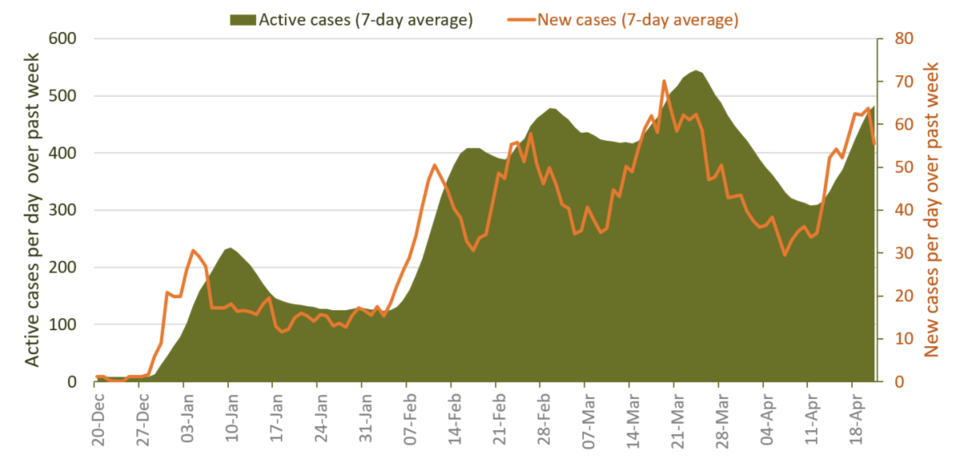Remote First Nations in Northwestern Ontario continue to face what one public health expert described as a “tsunami” of COVID-19 infections, with the Sioux Lookout First Nations Health Authority reporting elders in two communities died from the virus in the past week.
In a video update Wednesday, SLFNHA public health physician Dr. Lloyd Douglas said a surge of cases is being recorded in many of the 33 First Nations the organization serves across the region.
After dipping below 300 last week, the total number of active cases across SLFNHA communities topped 500 this week, sitting at 516 on Thursday.
That included 126 cases in Kasabonika Lake First Nation, 63 in Kitchenuhmaykoosib Inninuwug, 41 in Pikangikum, 40 in Lac Seul, and 86 in Sandy Lake.
Some communities hit with outbreaks have relatively low vaccine coverage, sparking concerns over how they’ll weather the current surge, Douglas said.
Across SLFNHA communities, 77.8 per cent of the eligible population five and older has received at least a first dose, while 66.9 per cent has received two or more. About 44 per cent of those eligible (12 and older) have received a third booster shot.
That rate varies widely between communities, with some still having rates well below 50 per cent, said SLFNHA president James Morris on Thursday.
The current surge is still driven largely by the Omicron variant in SLFNHA communities, many of which are accessible only by air or winter road, Douglas noted.
“Right now we believe we’re still experiencing the first Omicron wave, which would have been the fifth wave for the rest of the province,” he said.
Monitoring in the communities has so far detected little of the BA.2 variant that’s driving a sixth elsewhere in the province.
The remote communities have always experienced waves of the pandemic differently, Douglas said, recording few cases in 2020, and seeing a first major wave of infections in early 2021, around the time Ontario was experiencing its third.
The current Omicron-driven wave looks more like a tsunami, Douglas said.
“We weren’t impacted much with the first few waves in the province, then we got hit [in winter of 2021], things settled down, and then when Omicron came, this is a tsunami that really hits us.”
The continuing seriousness of the pandemic has been driven home with the death of two elders in separate SLFNHA communities over the past weekend, he reported.
A total of eight people from SLFNHA communities have died due to the virus, the organization reports.
“The key message is if you have not yet gotten your vaccine, it’s now time for you to do so,” Douglas said.
